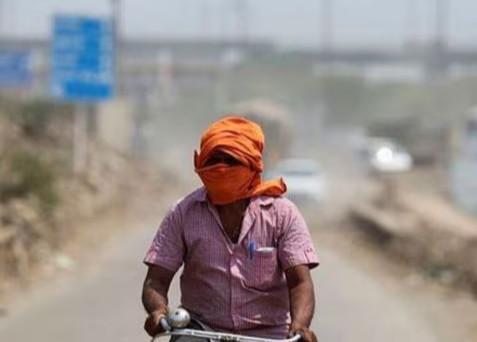
Extreme Heat Endangering Health & Productivity of Workers: Report
As the world grapples with the effects of climate change, a recent report by the World Health Organisation (WHO) and World Meteorological Organisation (WMO) has sounded an alarm bell about the devastating impact of extreme heat on the health and productivity of workers. The report highlights the alarming reality that even a slight increase in temperature above 20°C can have a significant impact on worker productivity, putting the lives of millions of workers around the world at risk.
According to the report, worker productivity drops by 2-3% for every degree above 20°C. This may seem like a small decline, but when you consider the number of workers affected, it translates to a significant loss of productivity and potentially devastating consequences for the economy.
The report identifies manual workers in agriculture, construction, and other sectors, as well as vulnerable populations such as children and the elderly in developing countries, as being particularly at risk. These groups are more likely to be exposed to extreme heat due to their work environments and living conditions.
Heat-related illnesses are a major concern, and the report emphasizes the importance of taking immediate action to mitigate the risks. Heatstroke, dehydration, and kidney dysfunction are just a few of the health risks associated with extreme heat. In severe cases, heat-related illnesses can be life-threatening, and the report urges governments, employers, and individuals to take proactive steps to protect workers.
So, what can be done to address this growing concern?
Temperature Control Measures
Employers can play a crucial role in maintaining a safe and healthy work environment by implementing temperature control measures. This includes providing air-conditioned spaces, installing fans, and ensuring adequate shading and ventilation. Governments can also take steps to regulate working conditions, enforcing policies that prioritize worker safety and health.
Personal Protective Equipment
Personal protective equipment (PPE) such as lightweight, breathable clothing, and hats can help protect workers from the heat. Employers can also provide PPE, such as heat-resistant gloves and footwear, to prevent heat-related injuries.
Hydration and Breaks
It is essential to ensure that workers have access to clean drinking water and regular breaks to rest and rehydrate. Employers can provide hydration stations, and encourage workers to drink plenty of water throughout the day.
Public Awareness Campaigns
Public awareness campaigns can go a long way in educating workers, employers, and members of the public about the risks associated with extreme heat. Governments and organizations can launch campaigns to raise awareness about heat-related illnesses, and provide tips on how to stay safe during hot weather.
Long-term Solutions
While immediate action is necessary to address the current crisis, it is also essential to focus on long-term solutions. This includes investing in renewable energy, reducing carbon emissions, and promoting sustainable development. By taking a proactive approach to climate change, we can mitigate its effects and create a safer, healthier, and more productive work environment for generations to come.
Conclusion
The report by WHO and WMO is a wake-up call for governments, employers, and individuals to take immediate action to address the growing threat of extreme heat. By implementing temperature control measures, providing PPE, ensuring hydration and breaks, launching public awareness campaigns, and investing in long-term solutions, we can protect the health and productivity of workers, and build a more sustainable future.
Source:
https://repository.inshorts.com/articles/en/PTI/45d9bd2d-ff57-417c-9e5f-831344bb34b0






